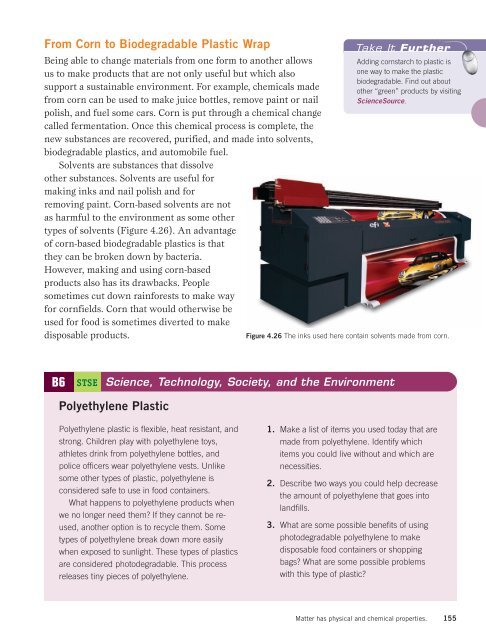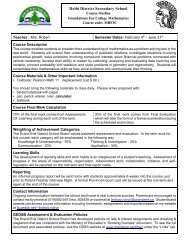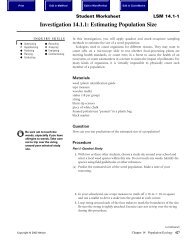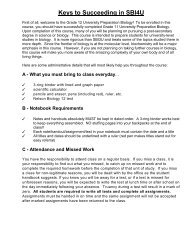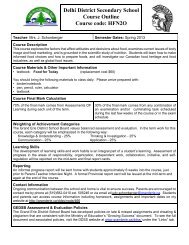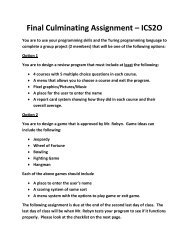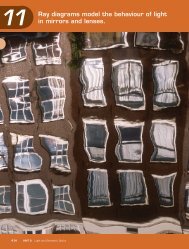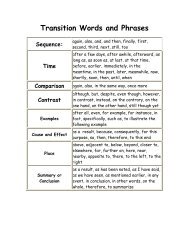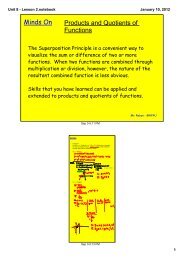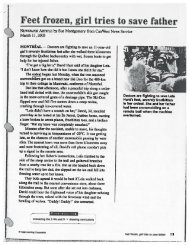Chapter 4.pdf
Chapter 4.pdf
Chapter 4.pdf
You also want an ePaper? Increase the reach of your titles
YUMPU automatically turns print PDFs into web optimized ePapers that Google loves.
From Corn to Biodegradable Plastic Wrap<br />
Being able to change materials from one form to another allows<br />
us to make products that are not only useful but which also<br />
support a sustainable environment. For example, chemicals made<br />
from corn can be used to make juice bottles, remove paint or nail<br />
polish, and fuel some cars. Corn is put through a chemical change<br />
called fermentation. Once this chemical process is complete, the<br />
new substances are recovered, purified, and made into solvents,<br />
biodegradable plastics, and automobile fuel.<br />
Solvents are substances that dissolve<br />
other substances. Solvents are useful for<br />
making inks and nail polish and for<br />
removing paint. Corn-based solvents are not<br />
as harmful to the environment as some other<br />
types of solvents (Figure 4.26). An advantage<br />
of corn-based biodegradable plastics is that<br />
they can be broken down by bacteria.<br />
However, making and using corn-based<br />
products also has its drawbacks. People<br />
sometimes cut down rainforests to make way<br />
for cornfields. Corn that would otherwise be<br />
used for food is sometimes diverted to make<br />
disposable products.<br />
Take It Further<br />
Adding cornstarch to plastic is<br />
one way to make the plastic<br />
biodegradable. Find out about<br />
other “green” products by visiting<br />
ScienceSource.<br />
Figure 4.26 The inks used here contain solvents made from corn.<br />
B6<br />
STSE<br />
Science, Technology, Society, and the Environment<br />
Polyethylene Plastic<br />
Polyethylene plastic is flexible, heat resistant, and<br />
strong. Children play with polyethylene toys,<br />
athletes drink from polyethylene bottles, and<br />
police officers wear polyethylene vests. Unlike<br />
some other types of plastic, polyethylene is<br />
considered safe to use in food containers.<br />
What happens to polyethylene products when<br />
we no longer need them If they cannot be reused,<br />
another option is to recycle them. Some<br />
types of polyethylene break down more easily<br />
when exposed to sunlight. These types of plastics<br />
are considered photodegradable. This process<br />
releases tiny pieces of polyethylene.<br />
1. Make a list of items you used today that are<br />
made from polyethylene. Identify which<br />
items you could live without and which are<br />
necessities.<br />
2. Describe two ways you could help decrease<br />
the amount of polyethylene that goes into<br />
landfills.<br />
3. What are some possible benefits of using<br />
photodegradable polyethylene to make<br />
disposable food containers or shopping<br />
bags What are some possible problems<br />
with this type of plastic<br />
Matter has physical and chemical properties.<br />
155


